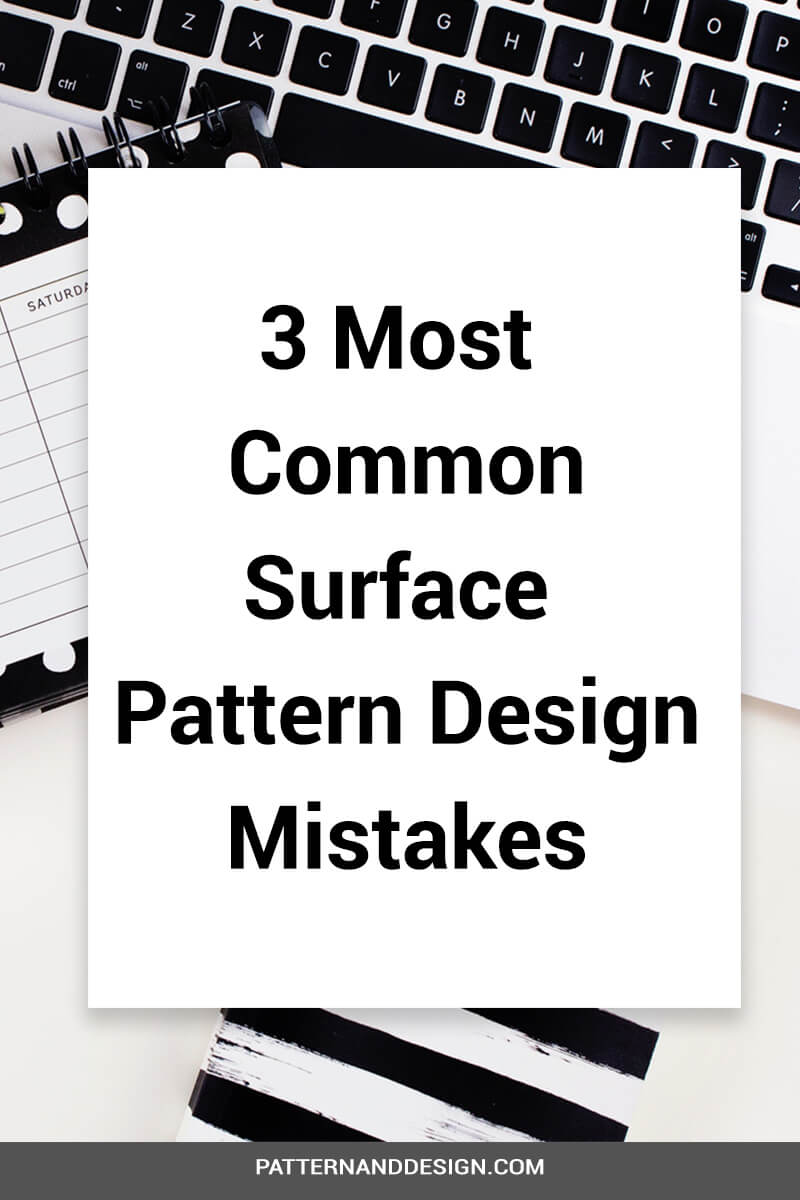learn about all things surface pattern design including the creative design process, being a successful creative entrepreneur & stepping into the mindset of a successful designer
welcome to the pattern design blog
blog
The
Categories
Popular
3 Most Common Surface Pattern Design Mistakes
There has been a real appreciation for surface pattern design in the last few years and we are seeing lots of designs out there with the rise of social media but not all of those designs work or look good. So, why is it that some design look great while others miss the mark? Let’s take a look at the 3 most common surface pattern design mistakes.
3 Most Common Surface Pattern Design Mistakes
1. The pattern doesn’t repeat
One of the things that set a surface pattern designer apart from any other designer is being able to create seamless pattern repeats. You shouldn’t be able to see where your design starts or finishes, it should match up perfectly. This is a huge mistake to make so make sure that after you’ve created your repeat that you repeat it out multiple times and check that you’ve repeated your design seamlessly. Even if you’re a really experienced designer, if you are creating a complex design it’s easy to slip up and make this mistake so be sure to take the time to check your work before you get it printed or send it to a client.
You can find out more about seamless patterns here or learn how to create seamless repeats in Illustrator here.
2. The design lacks interest
It’s easy to create a surface pattern repeat but it’s harder to create one that works well and is interesting. If you find your design isn’t working and feels a bit boring or lacklustre there are lots of little tricks you can try to take it to the next level. The most common thing that I find designs lack is depth. By adding depth to your design you will add interest. Depth can be created in lots of different ways some things to try include overlapping elements, adding texture, experimenting with line width and varying the scale of your motifs.
3. Bad choice of colour palette
Some people have a natural eye for working with colour, but lots of people have trouble selecting colours that work well together. It’s important that if you find creating colour palettes difficult that you have a few tricks up your sleeve to help you as colour can make or break a design. It’s something you get better at the more you do and it will take lots of practice but it’s an essential skill to keep refining and developing.
Here are a few resources you can use to help you create colour palettes.
Hopefully next time you’re designing and you feel your design is missing the mark, you can have a think about these three points.

Want to create another revenue stream by turning your art into surface pattern designs?
Get the free guide
Get my FREE Surface Pattern Design Starter Guide